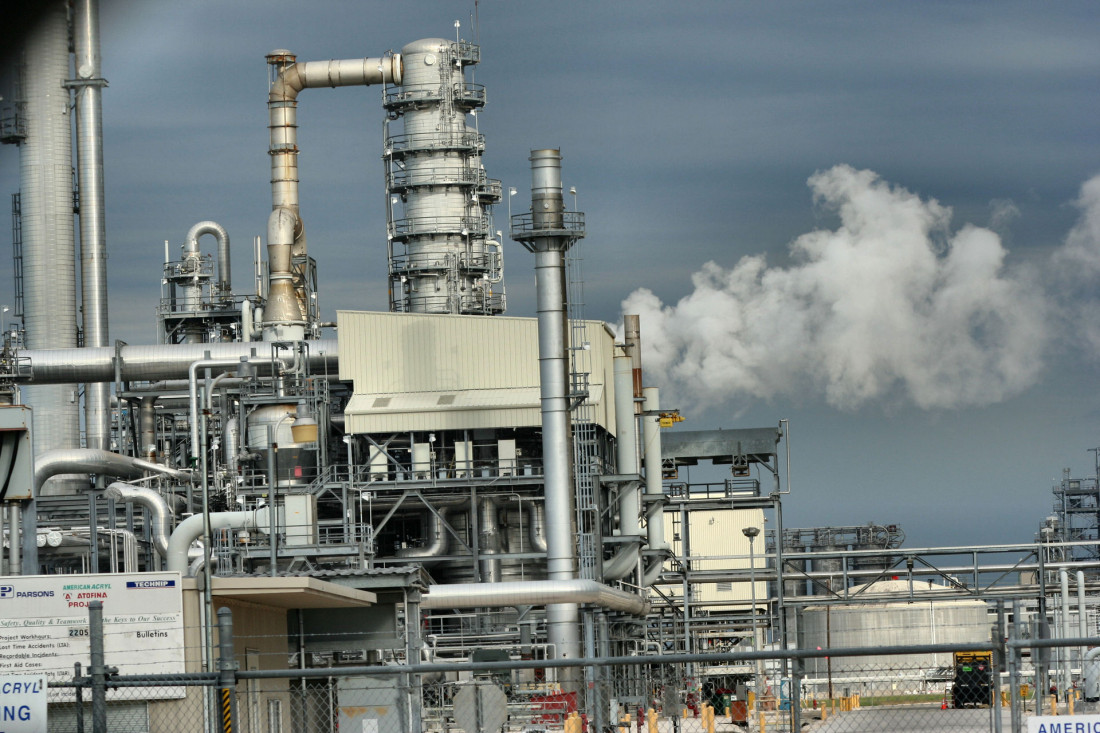A report just released by the International Energy Agency states that mankind will soon be using more oil for making petrochemicals than it uses to make fuel. While most petrochemical oil is used on generating energy for chemical production, much is also used as a raw chemical feedstock. As the petrochemical market grows it will increasingly influence oil prices, will be less sustainable, and its impact on climate change will multiply.
As the IEA made clear in its recent press release, “Petrochemicals are set to account for more than a third of the growth in world oil demand to 2030, and nearly half the growth to 2050, adding nearly 7 million barrels of oil a day by then. They are also poised to consume an additional 56 billion cubic metres (bcm) of natural gas by 2030, and 83 bcm by 2050.”
The size and influence of the petrochemical industry is already far-reaching, touching every corner of modern life. Basic petrochemicals are used to make everything from detergents to clothing, digital devices and medical equipment, fertilizers, tyres and packaging.
But of all these products the report, entitled ‘The Future of Petrochemicals’, is quick to highlight how demand for plastics is making the biggest impact. The analysis states that the growth rate of plastic production has more than doubled since 2000. Furthermore, the report explains how this cannot be ascribed purely to increasing global wealth, as the data shows that the use of plastics is now outpacing the use of other modern bulk materials, such as steel, cement, and aluminium.
The report also warns that developed economies have become dependent on petrochemicals. But it also foretells that much of the increased oil consumption will come when developing countries begin to adopt the practices of richer populations.
As the report writes, “Advanced economies currently use up to 20 times more plastic and up to 10 times more fertiliser than developing economies on a per capita basis, underscoring the huge potential for global growth.”
Additionally, the need to produce more food will be another factor driving demand for oil and gas. With global population predicted to reach 9.7 billion by 2050, the use of fossil fuels in the Haber-Bosch process for fertilizer production will also play a part in growing oil consumption.
The consequences of these trends will be far reaching, effecting the ozone layer, air quality, landfill sites, ocean waste, and climate change. As Kendra Pierre-Louis, of the NY Times reports, “Petrochemicals are currently the largest industrial energy consumer and the third-largest industrial emitter of greenhouse gas emissions. The report found that direct greenhouse gas emissions from petrochemicals would increase 20 percent by 2030 and 30 percent by 2050.”
Adding that, “The main driver of the petrochemical industry’s growing climate footprint will be plastics. Worldwide, roughly 300 million metric tons of plastic are produced each year.”
The increase in oil consumption is an unsustainable trend, but the petrochemical industry’s role in that growth has largely stayed out of the public limelight.
As Dr Fatih Birol, the IEA’s Executive Director, notes, “Our economies are heavily dependent on petrochemicals, but the sector receives far less attention than it deserves. Petrochemicals are one of the key blind spots in the global energy debate, especially given the influence they will exert on future energy trends. In fact, our analysis shows they will have a greater influence on the future of oil demand than cars, trucks and aviation.”
While great progress has been made to lessen oil-dependency in other industries, the chemical industry has yet to follow suit. For example, the transport industry has come a long way to reduce oil consumption, with more efficient engines, lighter cars, increased use of biofuels, and the development of electric cars. The energy industry has invested heavily in alternative supply sources such as wind, wave, and solar, while the construction industry has developed homes that are much better insulated.
Meanwhile, in many ways the petrochemicals industry has escaped public and political scrutiny and has therefore failed to develop more sustainable chemical feedstocks.
Ironically however, sometimes it is the increased role of oil-based plastics in other industries that has helped them to lessen their fuel consumption. For example, modern cars are lighter as so many parts are made from plastic or plastic composites. Similarly, solar panels and wind and wave turbines are also made with plenty of plastic, while plastic windows and petrochemical foams and insulants have reduced heating costs.
However, this is not to excuse the responsibility that the petrochemicals industry has in lessening its oil dependency.
As the online scientific journal Futurism, notes, “Decreasing emissions in the transportation and energy sectors while increasing the carbon footprint of plastics and other chemicals isn’t exactly a win for the environment.”
If you want to read more about chemical industry trends, chemical feedstock sustainability, and chemical supplier news, then check out other articles in the SPOTCHEMI blog page.
However, the comparison is stark. What other historically oil-dependent industries have achieved shows the change that is possible. The chemical industry has invested in alternative raw materials, but has yet to make them mainstream. Perhaps reports like this, and the recent report on global warming by the UN’s Intergovernmental Panel on Climate Change (IPCC), will give us all the impetus to push for more and more sustainable chemical raw materials.
Photo credit: IEA, PCQ, IMGKid, Deepetro, BrunswickShipping, & BusinessInsider

